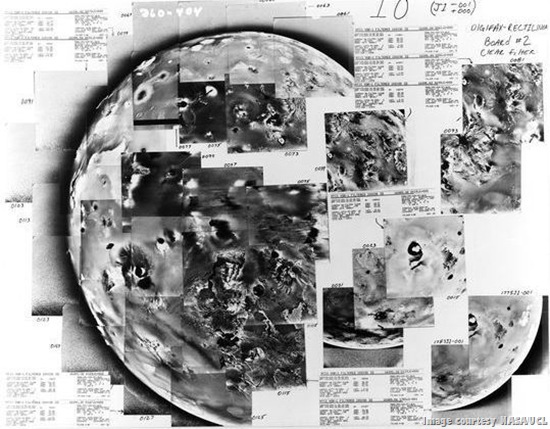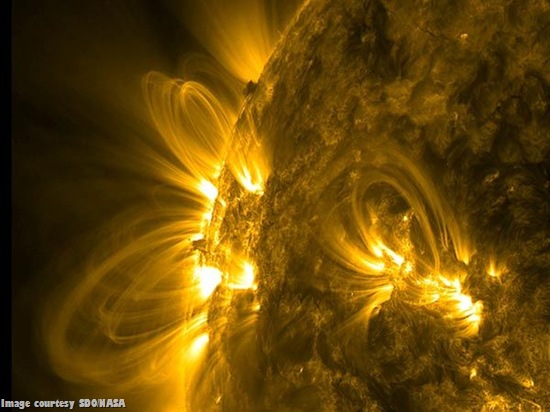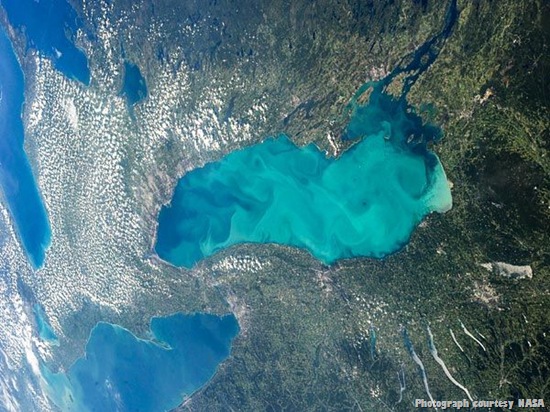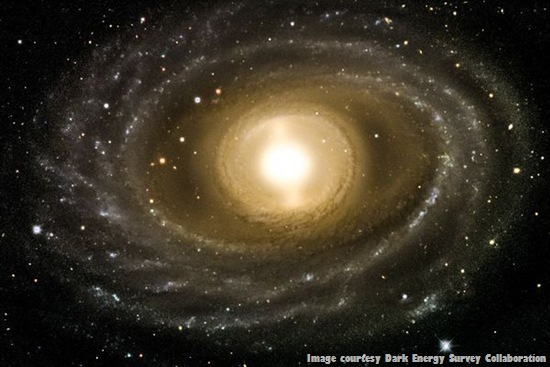
Space Pictures This Week: Solar Storm, Spiral Galaxy
By Andrew Fazekas, National Geographic News, 6 September 2013.
By Andrew Fazekas, National Geographic News, 6 September 2013.
A solar tempest brews, a spaceship blasts off, and a volcano belches smoke in this week's best space pictures.
1. Soaring Into Space
Virgin Galactic's passenger suborbital vehicle, SpaceShip2, broke the sound barrier on September 5 during its second powered test flight above California's Mohave Desert.
The rocket plane turned on its engines for a 20-second burn, soaring to an altitude of 69,000 feet (21,000 kilometres) after being dropped from the underbelly of a carrier aircraft.
Designed to be the first commercial rocket ride, SpaceShip2 will blast off on a two-hour flight that will reach the edge of space at 369,000 feet (112,000 kilometres), and stay in the microgravity environment of space for up to five minutes before gliding back to Earth. (Also see "After Space Shuttle, Does U.S. Have a Future in Space?")
The company plans to fly suborbital flights with paying passengers starting in 2014.
2. Space Puzzle
As a single snapshot of space history, this mosaic represents the first attempt in putting together the global appearance of Jupiter's volcanic moon Io from individual Voyager 1 1979 flyby images.
While the public has seen the computer-processed composite photos of the moons of Jupiter, the above illustration offers a peek at how the mission scientists first attempted to fit together, like puzzle pieces, individual detailed images beamed back to Earth from nearly 600 million miles (965 million kilometres) away. (See more pictures taken by Voyager.)
3. Solar Loops
On August 28, NASA's Solar Dynamics Observatory captured a solar tempest, which looked like giant arches of hot plasma erupting from the sun's surface. (See "New 'Sunquake' Trigger Found: Huge Solar Belches.") Solar scientists believe these unstable loops of supercharged gases are directly linked to eruptions of charged particles called coronal mass ejections, which can disrupt satellites and electrical grids here on Earth.
4. Watery Whiteout
An August 24 photograph taken from the International Space Station showcases a late-summer "whiting event" washing over Lake Ontario - one of North America's Great Lakes.
Such events occur when changes in water temperature and acidity in late summer cause fine particles of calcium carbonate to form, making the water turn milky in appearance, as seen here from orbit.
5. Majestic Spiral
Like a ghostly pinwheel, a majestic spiral galaxy known as NGC 1398 shines in the Fornax constellation some 65 million light-years from Earth in a picture released September 3.
Stretching some 135,000 light-years across, the galaxy is just slightly bigger than our own Milky Way galaxy, but contains less than a tenth the amount of stars.
This deep-sky image is part of the Dark Energy Survey being conducted by the 4-meter Victor M. Blanco Telescope at the National Science Foundation's Cerro Tololo Inter-American Observatory in Chile.
The survey will snap colour images of more than 300 million galaxies and 100,000 galaxy clusters as far as eight billion light-years away.
6. Smoke Trail
The Earth-observing satellite Landsat 8 snapped this image of Indonesia's highly active volcanic Paluweh Island (map) on September 8.
A trail of smoke stretching over the ocean and grey, scarred swaths of land in the northwestern part of the island are what's left from a deadly eruption and pyroclastic flow that descended from the summit of the volcano and killed five people on August 10.






No comments:
Post a Comment
Please adhere to proper blog etiquette when posting your comments. This blog owner will exercise his absolution discretion in allowing or rejecting any comments that are deemed seditious, defamatory, libelous, racist, vulgar, insulting, and other remarks that exhibit similar characteristics. If you insist on using anonymous comments, please write your name or other IDs at the end of your message.